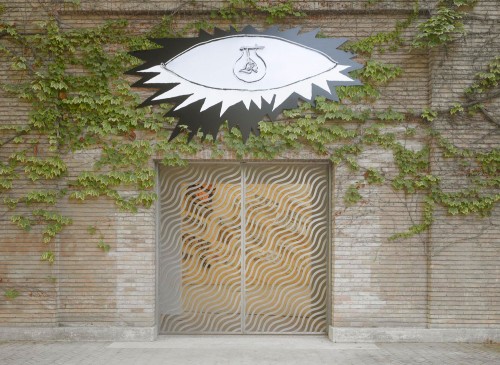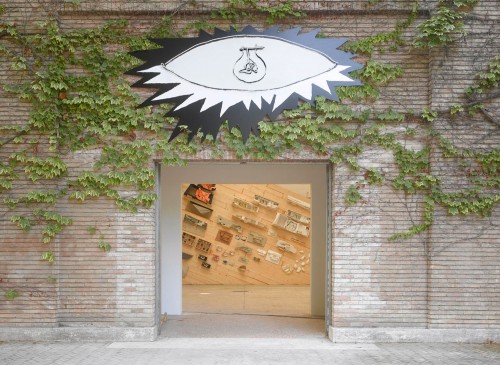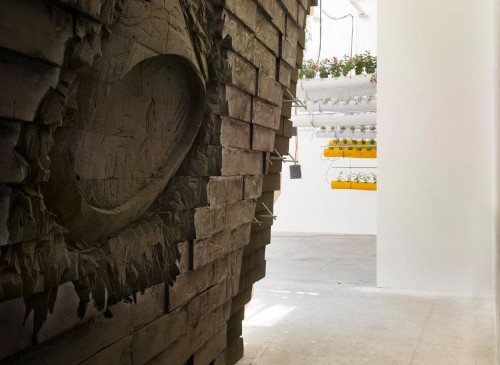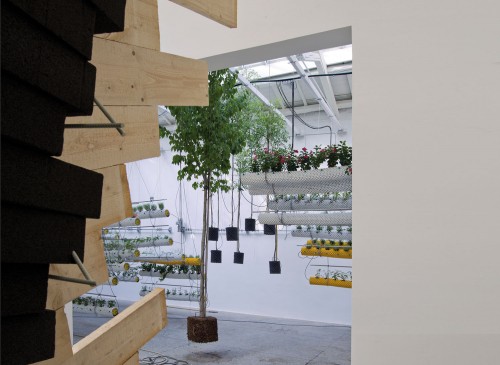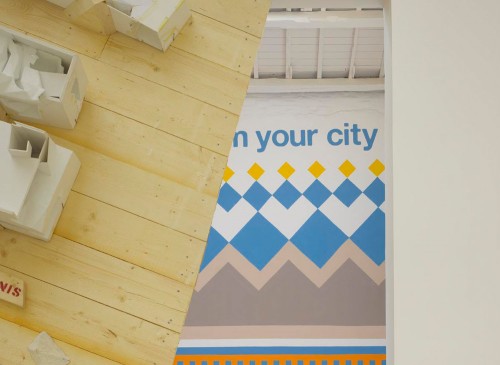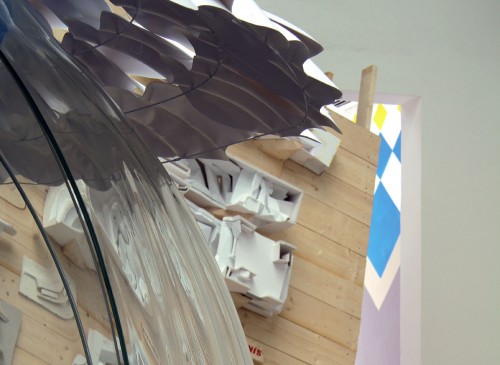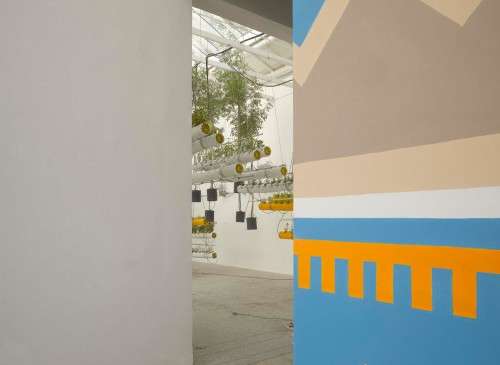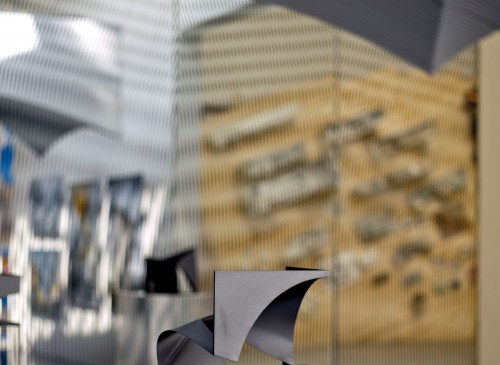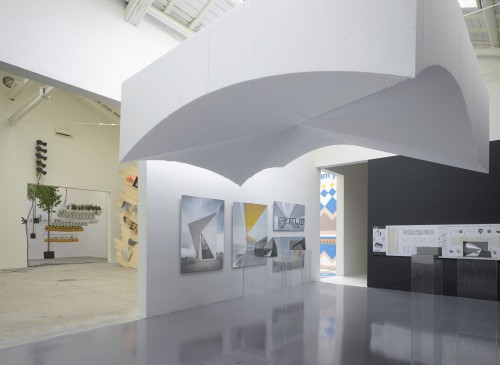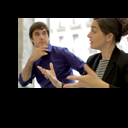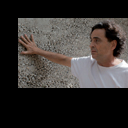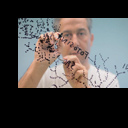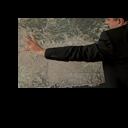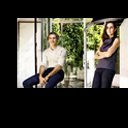
Spain Lab
4 texts to get into the SPAINLABINNOVATION, DIVINE TREASURE, by Débora Mesa Molina.
Opinions are divided as to whether or not innovation is a link in the chain of proper work, or a boom occurring beyond any logical sequence. It can probably be both at the same time, and most often lies somewhere between the disciplined process of investigation and sheer creativity. What is certain is that if innovating has to do with improving what exists, and investigating, with trying so, then these two actions should be the objective and the basis respectively of all disciplines. But undoubtedly of Architecture. Without innovation, the heavy machinery that engages the world would not move. And this is something that we cannot afford considering that the environment in which we live is far from being in perfect balance, if that balance can be struck at all.
Under these circumstances, any effort not aimed at fixing what does not work or improving what does but could work better should be considered futile. However actual fact shows us that once and again, this axiom does not hold true. In fact, it could be said that, except in extraordinary contexts, innovators or those who strive to be, far from being treated as heroes and supported by society feeding from their achievements, usually face a headwind; they swim against the tide, taking on risks, and forging their progress singlehandedly. And only if they survive a harsh Darwinian selection process can they find themselves rewarded for their efforts, though without much of any guarantee at all.
Innovation involves making a leap in the dark, from firm ground to the unknown. Findings need a process of accommodation; also of digestion by those who think they know everything there is to know and resist accepting what is new. And the innovator, in order to become one, has to take on a wide spectrum of chameleon-like roles to play the enlightened wise person and the prestidigitator at the same time. Pablo Picasso knew how to tuck away Les Demoiselles d’Avignon in time and withstand a nearly ten year silent battle until the world of art accepted his work and acknowledged its revolutionary nature. But unfortunately, we as architects do not have that great ability to hide away our completed works until the world is up to the task of integrating them. Our profession requires us to connect with industry and society and to play our cards without any slight of hand. In principle this is a privilege, or to put it better, it would be if the system were better designed. But it isn’t really. And accidents happen which we, unlike Picasso, are unable to nimbly skirt around. Because if once tested and built, had Miguel Fisac been able to hide away his masterwork on the calle Josefa Valcárcel in Madrid, known as ‘The Pagoda’, until the storm had passed, things would be very different and those who love our profession would not look in shame at the same plot of land where a vulgar mirror office building now stands in its place. Nor would we see the rusting away of the magnificent Brussels Pavilion by Corrales & Molezún, left to waste away in Madrid’s Casa de Campo park. We would instead have tucked it safely away in a drawer until someone knew how to redeem its honour for architectural culture. We wouldn’t have to be sorry and upset about these and other attacks on good taste and professional decency. But unfortunately these fictions defy reality.
Other staggering figures can be added. While academy has generated 22 Nobel Prizes in Switzerland, 6 in Italy, 86 in the United Kingdom, 31 in France, 317 in the United States… and a long list of etceteras; in Spain, only Santiago Ramón y Cajal maintained certain ties with university in order to carry out his research on the structure of the nervous system; the other six laureates (José Echegaray y Eizaguirre, Jacinto Benavente, Juan Ramón Jiménez, Severo Ochoa, Vicente Aleixandre and Camilo José Cela) worked without any academic affiliation in Spain, though not outside Spain. This is no coincidence. Nor is it a question of talent but rather an infrastructural and cultural problem, perhaps also a matter of conscience that it is incumbent on us to tackle at its very roots. And time is not exactly on our side. It makes no sense for research, and therefore innovation that may stem from it, not to be directly underpinned by an educational system that cultivates both, and an industry that links them into the real world. Otherwise, they have little chance of making any impact on society.
There are issues on which no turning back is possible. But there is a very clear path forward: there is no alternative to placing the necessary means at the disposal of those who work towards a better world so that they find, also within Spain’s borders, what it was that led them to emigrate or cut themselves off; and in order for quality, irrespectively of quantity, to stand as the prevailing value in any action. This way our distorted senses will be able to recover from their hypertrophy over the last several years and once again appreciate the proper scale of things.
All we need to do is rid ourselves of our age-old complexes and look around a bit, abroad, and at home as well because luckily there are an increasing number of initiatives arising that seek to promote, provoke and support innovation. SPAINLAB is one, and aims to make its modest contribution to changing spirits and generating an optimistic outlook towards the future of architecture.
There will be those who will still want to clutch at straws, but if I have to choose between the old saying “better the devil you know that the devil you don’t” and the lyrics to Serrat’s song “I prefer the wise men I have yet to meet than the fools I already know”, I am clear about which one I’ll opt for.
INNOVACIÓN, DIVINO TRESORO, por Débora Mesa Molina.
Sobre si la innovación es un eslabón dentro de una cadena de trabajo ordenado o se trata de una explosión fuera de cualquier secuencia lógica, hay opiniones divididas; probablemente pueda ser una cosa y la otra a la vez, y más frecuentemente un momento intermedio entre el proceso disciplinado de investigación y la creatividad pura. Lo que es indudable es que si innovar tiene que ver con mejorar lo que existe, e investigar, con intentarlo, entonces estas dos acciones deberían ser el objetivo y el fundamento respectivamente de cualquier disciplina. Pero sin lugar a dudas de la Arquitectura. Sin innovación, la pesada maquinaria que engrana el mundo no se movería. Y esto es algo que no nos podemos permitir cuando el medio en que vivimos dista mucho de alcanzar el equilibrio perfecto, si es que existe.
En estas circunstancias, cualquier esfuerzo no encaminado a superar lo que no funciona o lo que, funcionando, pudiera hacerlo mejor, debería considerarse inútil. Pero la realidad nos demuestra que en reiteradas ocasiones esta máxima no se cumple. De hecho podría decirse que, excepto en entornos extraordinarios, los innovadores, o los que trabajan por serlo, lejos de ser tratados como héroes y apoyados por la sociedad que se alimentará de sus logros, suelen encontrarse con viento de cara; avanzan a contracorriente, asumiendo los riesgos y forjando su progreso en soledad. Y sólo si sobreviven dentro de un duro proceso de selección darwiniana, podrán ver sus esfuerzos recompensados, eso sí, sin demasiadas garantías.
La innovación implica un salto al vacío, del terreno firme a lo desconocido. Los hallazgos exigen de un proceso de acomodación; también de digestión por parte de quienes piensan que conocen todo lo que hay y se resisten a aceptar lo nuevo. Y el innovador, para llegar serlo, tiene que adoptar un amplio espectro de roles camaleónicos que le convierten en sabio ilustrado y prestidigitador a la par. Pablo Picasso supo arrinconar a tiempo a Las Señoritas de Avignon y aguantar el pulso casi 10 años hasta que la cultura artística aceptó su obra y reconoció su carácter revolucionario; pero por desgracia los arquitectos no tenemos tan magna facultad de esconder las obras construidas hasta que el mundo es capaz de integrarlas. Nuestra profesión exige que nos conectemos con la industria, con la sociedad, que juguemos nuestras cartas sin trucos de magia, y esto es en principio un privilegio, o mejor dicho, lo sería si el sistema estuviera bien diseñado. Pero no lo está tanto y ocurren accidentes que, como Picasso, no somos capaces de sortear con agilidad. Porque si, una vez testada y en pié, Miguel Fisac hubiera podido esconder su obra maestra de la calle Josefa Valcárcel en Madrid, conocida como La Pagoda, hasta que hubiera pasado el temporal, otro gallo cantaría y los amantes de nuestra profesión no miraríamos avergonzados el mismo solar que hoy ocupa un vulgar y reflectante edificio de oficinas; como tampoco asistiríamos al consumo y la oxidación del magnífico Pabellón de Bruselas de Corrales y Molezún, abandonado en el corazón de la Casa de Campo, lo guardaríamos en un cajón hasta que alguien supiera cómo rescatar su honor para la cultura arquitectónica. No tendríamos por qué lamentarnos de estos y otros atentados contra el buen gusto y la decencia profesional. Pero lamentablemente estas ficciones superan la realidad.
Hay otros datos que resultan demoledores: mientras que la academia ha generado en Suiza 22 Premios Nóbel, 6 en Italia, 86 en Reino Unido, 31 en Francia, 317 en EEUU… y un largo etcétera; en España, sólo Santiago Ramón y Cajal mantuvo cierta vinculación con la universidad para desarrollar su investigación acerca de la estructura del sistema nervioso; los otros 6 laureados (José Echegaray y Eizaguirre, Jacinto Benavente, Juan Ramón Jiménez, Severo Ochoa, Vicente Aleixandre y Camilo José Cela) trabajaron sin afiliación académica alguna en nuestro país, que no fuera de él. No es casualidad, ni tampoco una cuestión de talento, es un problema infraestructural, y cultural, quizá también un problema de conciencia; que es nuestra obligación atajar de raíz porque el tiempo no juega precisamente a favor. Porque además no tiene ningún sentido que la investigación, y por tanto la innovación que pueda derivar de ella, no estén directamente soportadas por un sistema educativo que las cultive y una industria que las conecte con la realidad, ya que si no es así difícilmente calarán en la sociedad.
Hay cuestiones que ya no tienen marcha atrás; pero sí que hay en cambio una marcha hacia delante que es muy clara: no queda otra que poner los medios necesarios para que los que trabajan por lograr que el mundo sea mejor, encuentren también dentro de nuestras fronteras el soporte que a muchos les ha llevado a emigrar o a incomunicarse; y para que la calidad, con independencia de la cantidad, vuelva a ser el valor de cualquier acción; para que nuestros sentidos deformados consigan superar la hipertrofia de los últimos años y disfruten de nuevo de escala adecuada de las cosas.
Sólo hay que desprenderse de algunos complejos atávicos y mirar un poco fuera, y también dentro, porque por suerte y cada vez más surgen iniciativas que buscan promover, provocar o apoyar la innovación. Entre ellas SPAINLAB quiere ser una más, un grano de arena con el que contribuir a un cambio de espíritu, una mirada optimista hacia el futuro de la Arquitectura.
Habrá quienes decidan seguir aferrándose al clavo ardiente, pero entre el ya polvoriento y muy acuñado refrán “más vale viejo conocido que nuevo por conocer” y la letra de Serrat “prefiero los sabios por conocer que los locos conocidos”, yo tengo claro con qué me quedo.

